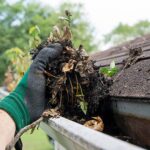Toronto, a bustling city with a lush urban canopy, is home to a diverse range of tree species. While trees add beauty and provide numerous environmental benefits, there are times when tree removal becomes necessary. Whether it’s due to disease, damage, or safety reasons, understanding the tree removal process in Toronto is crucial. In this post, we will delve into the essential steps and legal requirements to ensure a smooth and compliant tree removal process.
- Assessment and Permit Application: The first step in the tree removal process is to assess the tree’s condition and determine if removal is the best course of action. In Toronto, any tree with a diameter of 30cm or more measured at 1.4m above ground level is protected under the City’s Tree Protection By-law. To remove such a tree, you must obtain a tree removal permit from the City of Toronto. The application process involves submitting an arborist report, a site plan, and a permit fee. It’s crucial to hire a professional arborist to conduct a thorough assessment and prepare the necessary documentation.
- Hiring a Professional Tree Removal Service: Once you have obtained the necessary permits, the next step is to hire a professional tree removal service. Opting for a reputable and experienced service is vital to ensure safety and compliance with local regulations. Tree removal Toronto is a complex task that requires specialized equipment and expertise. Professionals will have the necessary tools and knowledge to safely and efficiently remove the tree, minimizing the risk of damage to property or injury.
- The Removal Process: The tree removal process involves several key steps. First, the surrounding area is secured to ensure safety. The tree is then carefully cut down, and the branches are removed. Depending on the size and location of the tree, cranes or other equipment may be required to safely lower large branches to the ground. Once the tree has been felled and the branches removed, the stump is typically ground down or removed. This ensures a level surface and prevents any tripping hazards.
- Post-Removal Cleanup and Disposal: After the tree has been removed, the site is cleaned up, and all debris is hauled away. Professional tree removal services will ensure that the area is left tidy, with no leftover branches or debris. It’s essential to check with the service provider about their disposal practices, as responsible disposal is crucial to minimize the environmental impact.
- Replanting (if applicable): In some cases, the City of Toronto may require replanting as a condition of the tree removal permit. Replanting helps to maintain the urban canopy and contributes to the city’s green infrastructure. If replanting is required, it’s crucial to choose a suitable species and ensure proper planting practices are followed.
In conclusion, tree removal in Toronto is a regulated process that requires careful planning and professional assistance. By following the necessary steps and legal requirements, you can ensure a safe and efficient tree removal process, contributing to the health and safety of Toronto’s urban environment.











